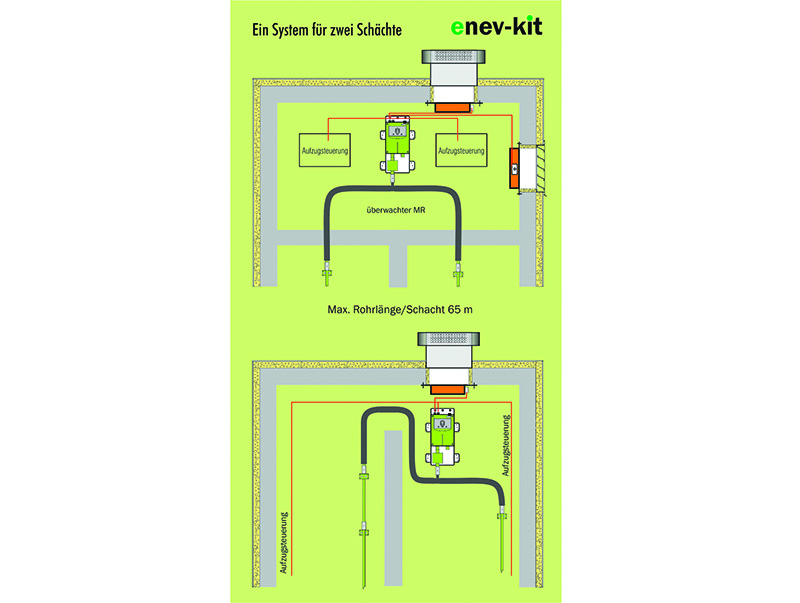Photo: © Kone

News | April 2024
Kone acquires Paca Ascenseurs
Assa Abloy has sold its lift maintenance business Paca ascenseur (Paca) in France to Kone. With this acquisition, Kone intends to strengthen its local presence in the region.

January 2017
In lift shafts inside the thermal envelope warm air flows through the gaps of the landing doors into the shaft. Reinforced by the chimney effect, it escapes to the outside uncontrolled through the smoke vent opening. Considerable heat losses and high heating costs are the consequence.
Controlled ventilation can prevent the heating losses of a lift shaft through the smoke vent opening. It serves safety, living quality and energy-saving. However, closing the smoke vent opening in the newly built and existing lifts is not only associated with advantages, but also risks.
Since there is no longer any natural, regular ventilation, enhanced CO2 values in the shaft can arise. Another consequence is moisture in the shaft head area, which can cause building damage and the formation of mould. This results in health risks and high costs for later renovation measures.
 The enev-kit from Aleatec GmbH, consisting of regulated building products and certified according to European-harmonised standards, meets all the requirements for safety, energy-saving and controlled air exchange in the lift shaft. Enev-kit is fitted with a CO2 sensor for permanent air monitoring in the shaft and uses it to control the air exchange required.
The enev-kit from Aleatec GmbH, consisting of regulated building products and certified according to European-harmonised standards, meets all the requirements for safety, energy-saving and controlled air exchange in the lift shaft. Enev-kit is fitted with a CO2 sensor for permanent air monitoring in the shaft and uses it to control the air exchange required.
At a hygienic interior air value of 1500 ppm, the multi-leaf damper opens automatically, ensuring air exchange. The moisture sensor triggers the ventilation process upon reaching an adjustable humidity value. This achieves an optimal room climate to prevent mould. If the temperature in the shaft head exceeds a pre-set value, the flap opens and warm air can escape. The closing process is correspondingly automatic.
The EN 54-20 certified smoke induction device (RAS) assumes the role of removing air from the area to be monitored via the induction line network and monitoring it for smoke particles. A pipe system is mounted over the whole shaft height with the induction pipes every 2.50 m. The high performance RAS can even monitor two shafts separated by walls and in this way make using a second system unnecessary. The smoke induction devices are well-suited for this use thanks to prompt and fast detection and the mounting options.
This situation contributes to operational safety, especially in lifts without machine-rooms, since lift malfunctions (e.g. as a result of PTC thermistor triggering) are prevented. The freely-programmable timer-controlled ventilation function in addition ensures regular air exchange within the shaft.
Write a comment